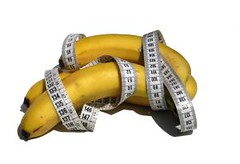 Though often underestimated, when you are short on time or hoping to blast off excess calories, short distance, high speed sprints should be an exercise to be considered. Short intervals of sprints keep your heart jumping from low to high, which actually burns more calories than if you were to continually jog for a longer period of time. After longer work outs you will get sore – some of the ingredients in protein shake recipes can help combat this. Your body tends to adjust and regulate itself when sustaining a pace which makes it easier for your lungs, muscles, and overall body. However, you want to challenge your body! And by switching to this method, your body will struggle more to go from walking/jogging to full out sprints. The high intensity of the sprints requires your muscles to move rapidly and pushes your body to the limit. Like long distance running or jogging, sprints actually help build endurance as well because your lungs and muscles are getting stronger. These exercises can take a lot out of you – calories in a banana are sure to help.
Though often underestimated, when you are short on time or hoping to blast off excess calories, short distance, high speed sprints should be an exercise to be considered. Short intervals of sprints keep your heart jumping from low to high, which actually burns more calories than if you were to continually jog for a longer period of time. After longer work outs you will get sore – some of the ingredients in protein shake recipes can help combat this. Your body tends to adjust and regulate itself when sustaining a pace which makes it easier for your lungs, muscles, and overall body. However, you want to challenge your body! And by switching to this method, your body will struggle more to go from walking/jogging to full out sprints. The high intensity of the sprints requires your muscles to move rapidly and pushes your body to the limit. Like long distance running or jogging, sprints actually help build endurance as well because your lungs and muscles are getting stronger. These exercises can take a lot out of you – calories in a banana are sure to help.
Furthermore, studies show that those who did quick sprints at a high intensity followed by intervals of walking or jogging tended to burn more calories after the workout than those who did sustained jogging or running for a long period of time. In addition to these many benefits, it is important to realize that the calories that are burned off while sprinting tend to come first from both body’s storage of fat and carbohydrates, as opposed to the long held theory that low intensity workouts were meant for fat burning. While low intensity workouts are good at targeting fat storages, you won’t burn as many calories as you would if you were sprinting—creating a more toned body and strengthened muscles. Avoid alcohol – even low calorie alcoholic drinks have a long term effect on metabolism.
